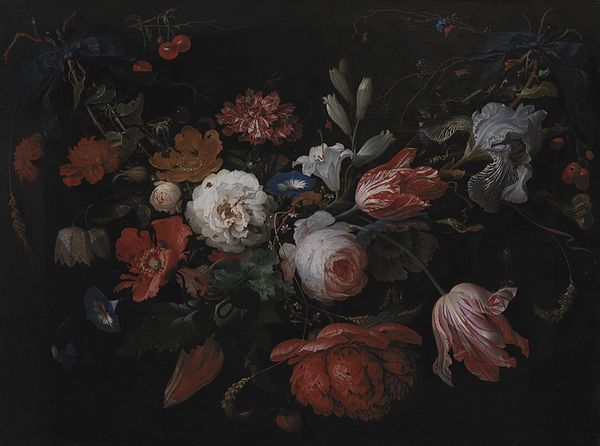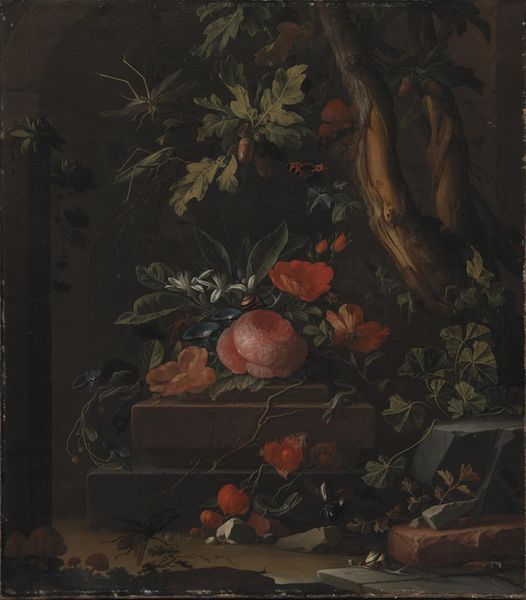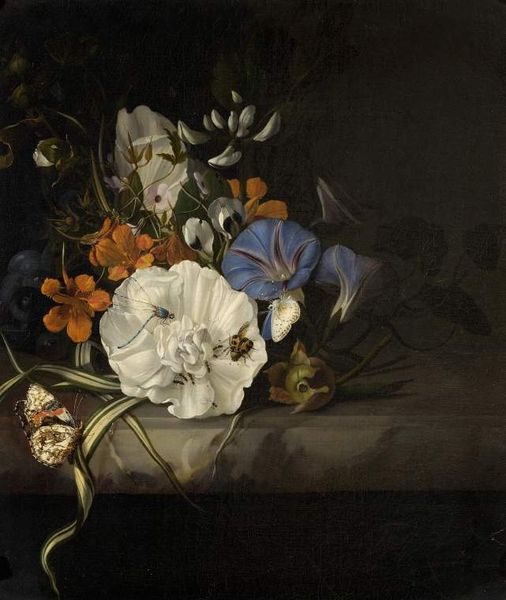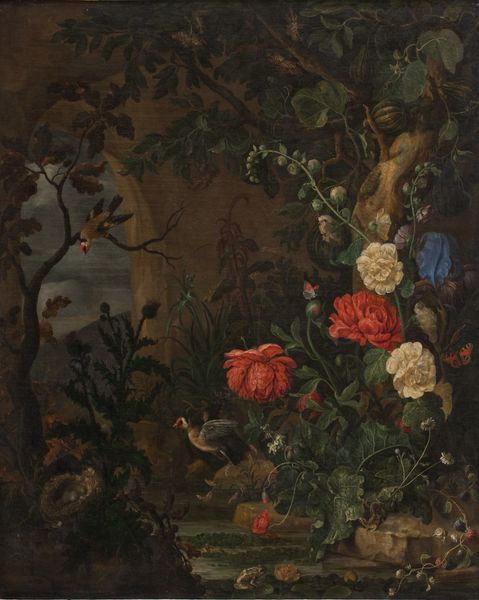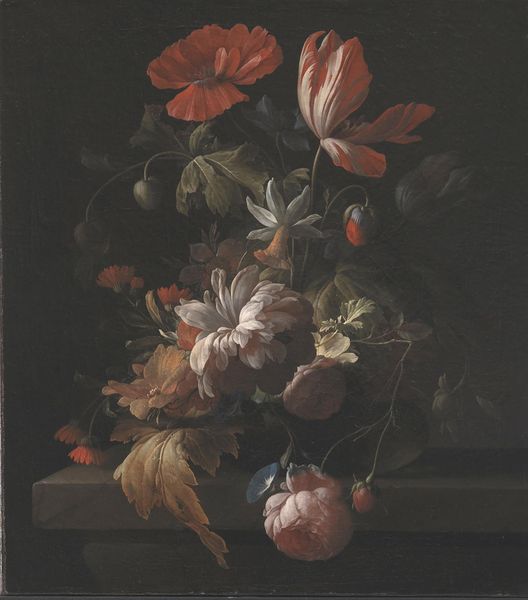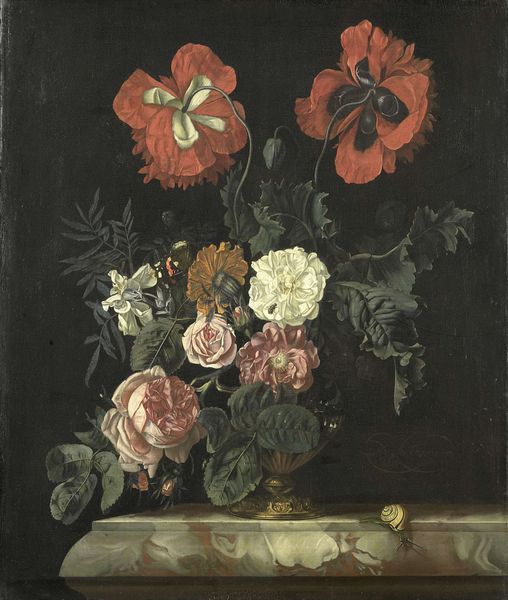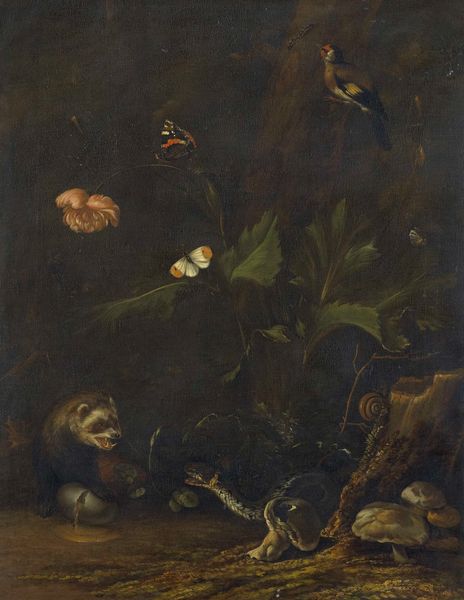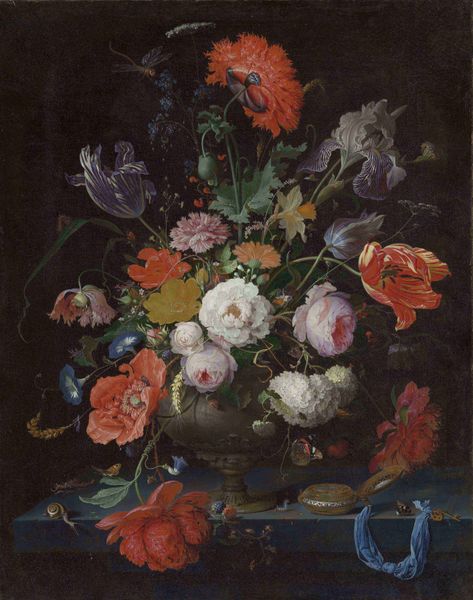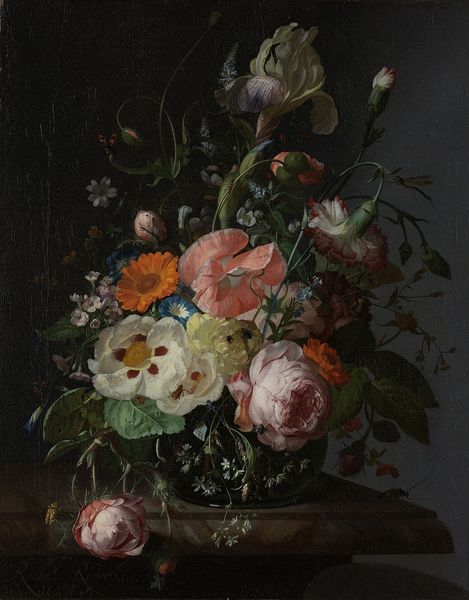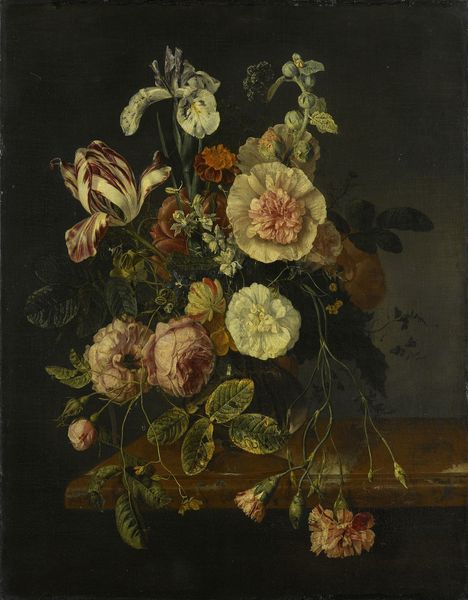
painting, oil-paint, wood
#
baroque
#
dutch-golden-age
#
painting
#
oil-paint
#
wood
#
realism
Dimensions: 34 cm (height) x 46.2 cm (width) (Netto), 48.6 cm (height) x 61.4 cm (width) x 4.7 cm (depth) (Brutto)
Curator: Take a moment with Jan Baptist van Fornenburgh’s painting, titled "Flowers." This oil on wood panel dates back to the Dutch Golden Age, somewhere between 1623 and 1649, and now resides here at the SMK. Editor: Immediately, I’m struck by the contrast between the luminous pink of the blossoms and the somber, almost gothic, darkness that surrounds them. It feels very dramatic. Curator: The "Flowers" still life tradition became popular as the rising merchant class desired to display their wealth and sophistication. Paintings such as these were symbols of prosperity and refined taste. Editor: Indeed. Look at the composition; it’s more than just an arrangement. The artist carefully manipulates light to draw the viewer's eye from the flowers to the little creatures—the lizard, the mouse. The whole scene seems very staged. Curator: Dutch Golden Age still lifes were laden with symbolism. These works reflected on mortality and decay – the beautiful blooms existing alongside critters, highlighting life's fragility and ephemerality. The contrast acted as a "memento mori," reminding viewers of the transience of beauty and life. Editor: The stark realism with which Fornenburgh captures each tiny detail - the textures, the reflections, the soft bloom on the petals - invites an almost microscopic examination. It's as though we’re being challenged to see both the grand spectacle and the minutiae of existence. Curator: Considering the social and political climate of the Dutch Republic at the time, "Flowers," along with other vanitas paintings, acted as silent critics against worldly attachment, encouraging reflection on higher spiritual values amidst burgeoning wealth. Editor: So it's a painting that's both beautiful and quietly unsettling, urging us to find balance. It really uses the dark backdrop to its full potential as a semiotic device, setting the mood for life and death. Curator: Precisely. These pieces played a pivotal role in shaping Dutch cultural identity, subtly nudging society toward mindful living. Editor: I see the painting now, as an intimate play of contrasts – both visually, and philosophically. It asks us to engage in visual contemplation beyond its pretty façade.
Comments
No comments
Be the first to comment and join the conversation on the ultimate creative platform.
